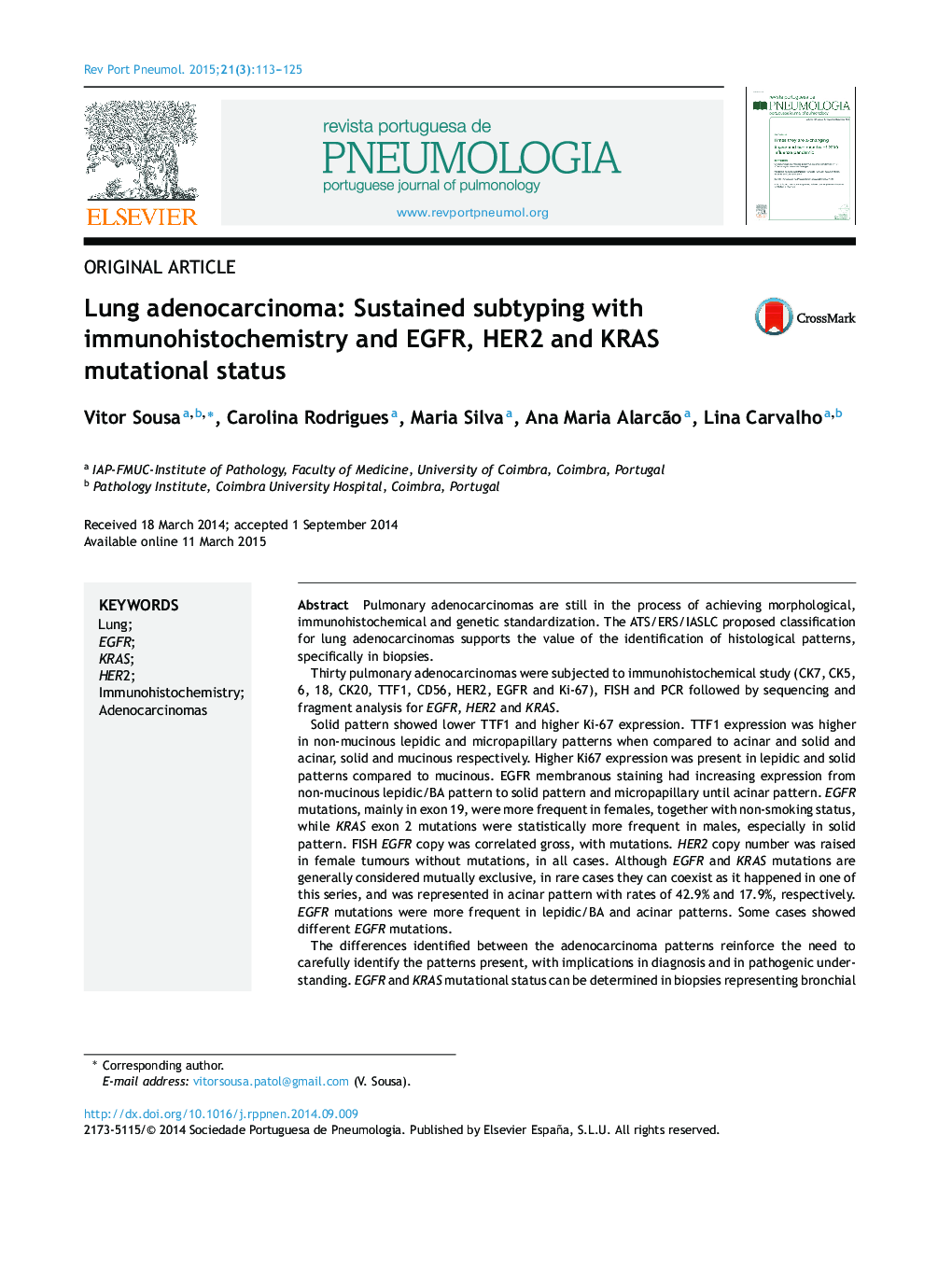| Article ID | Journal | Published Year | Pages | File Type |
|---|---|---|---|---|
| 4214667 | Revista Portuguesa de Pneumologia (English Edition) | 2015 | 13 Pages |
Pulmonary adenocarcinomas are still in the process of achieving morphological, immunohistochemical and genetic standardization. The ATS/ERS/IASLC proposed classification for lung adenocarcinomas supports the value of the identification of histological patterns, specifically in biopsies.Thirty pulmonary adenocarcinomas were subjected to immunohistochemical study (CK7, CK5, 6, 18, CK20, TTF1, CD56, HER2, EGFR and Ki-67), FISH and PCR followed by sequencing and fragment analysis for EGFR, HER2 and KRAS.Solid pattern showed lower TTF1 and higher Ki-67 expression. TTF1 expression was higher in non-mucinous lepidic and micropapillary patterns when compared to acinar and solid and acinar, solid and mucinous respectively. Higher Ki67 expression was present in lepidic and solid patterns compared to mucinous. EGFR membranous staining had increasing expression from non-mucinous lepidic/BA pattern to solid pattern and micropapillary until acinar pattern. EGFR mutations, mainly in exon 19, were more frequent in females, together with non-smoking status, while KRAS exon 2 mutations were statistically more frequent in males, especially in solid pattern. FISH EGFR copy was correlated gross, with mutations. HER2 copy number was raised in female tumours without mutations, in all cases. Although EGFR and KRAS mutations are generally considered mutually exclusive, in rare cases they can coexist as it happened in one of this series, and was represented in acinar pattern with rates of 42.9% and 17.9%, respectively. EGFR mutations were more frequent in lepidic/BA and acinar patterns. Some cases showed different EGFR mutations.The differences identified between the adenocarcinoma patterns reinforce the need to carefully identify the patterns present, with implications in diagnosis and in pathogenic understanding. EGFR and KRAS mutational status can be determined in biopsies representing bronchial pulmonary carcinomas because when a mutation is present it is generally present in all the histological patterns.
